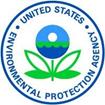Wilson Creek - 319 Project
Scope
OEWRI will provide technical assistance and complete the following tasks in support of the Wilson Creek 319 project:
- Load reduction analysis for installed BMP’s using STEP-L model and appropriate land management scenarios;
- Storm water monitoring at the Lower Wilson Creek USGS gaging site for 2 years;
- WQ monitoring at two sites at South creek restoration site for one year.
STEP-L nonpoint modeling will be completed for present, urban, and wooded/managed scenarios for 45 acres of riparian easement area. In addition results of previous studies and some additional modeling will be used to evaluate BMP effects from hydrological improvements including 1.5 acres of impervious area reduction/pavement removal/vegetation and three detention basin retrofits of, as yet, unknown size.
OEWRI will perform storm chasing with 1-2 samples per event and 5-6 events per year distributed monthly/seasonally with samples taken to the City of Springfield Southwest Treatment Plant (SWTP) for analysis. OEWRI will not perform laboratory analyses on the water samples collected from the Lower Wilson site. SWTP will analyze all water samples collected for this task during base flows (collected by SWTP) and storm events (collected by OEWRI). The water quality indicators to be measured by STP may suspended sediment, total phosphorus, total nitrogen, bacteria, chloride, specific conductivity, temperature, DO, and pH.
The Institute will reinstall continuous stage gages at the two previously monitored sites at Campbell and Kansas Expressway on South Creek. At both sites, water quality monitoring during year 2 will include base-flow sampling at 10-12 times per year and storm chasing with 1-2 samples per event and 5-6 events per year distributed monthly/seasonally. Lab analysis will be performed at the OEWRI laboratory by analysis of water concentrations of e-coli, suspended sediment, total phosphorus, and total nitrogen, and probe analysis of chloride, specific conductivity, temperature, DO, and pH. Discharge rating measurements will be collected at least 2 times per year at each gage.
Objectives
- Create a load reduction report based upon modeling results and application of reduction estimated from previous studies of similar practice;
- Produce annual and final water quality monitoring reports on combined base flow and storm water monitoring activities, water quality results, and water quality trends;
- Produce a final water quality monitoring report for South Creek including an updated water quality database containing current and historical data, and a report of concentration and load trends to evaluate how current data compares to previous water quality data to evaluate temporal changes in water quality.
Documents
Lower Wilson Creek Water Quality Report (2022)
Lower Wilson Creek 319 Project (2019)
Partners
U.S. Environmental Protection Agency, Region VII
Funding
U.S. Environmental Protection Agency
